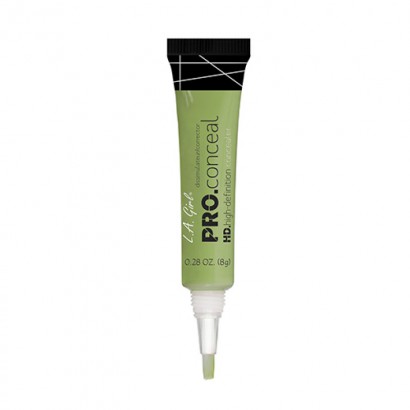How to colour correct your complexion to perfection?

Say goodbye to common issues such as redness and dullness with our guide to colour correcting.
Colour correcting can seem like a big beauty dilemma for many. It is important to note that your skin may not be even overall, making it difficult for a single product like foundation to correct your skin. Different individuals experience different skin concerns such as redness, dullness or sallowness. That being said, the invention of many colour correcting products make it easy to correct and cancel any areas of darkness and pigmentation. It all boils down to the choice of colour used.
Here, with our beginner's guide to colour correcting, you'll well be on your way to looking flawless on your next visit out.
GREEN CORRECTOR
If you struggle with concealing blemishes or redness on the skin formed by broken blood vessels, try using a green corrector. When choosing a corrector, it is important to choose a shade complementary to the area of concern on the colour well. Green helps to cancel out red making it a great choice to diminish the appearance of your skin concerns. Apply a green corrector to areas of redness and before it sets fully, go in with your foundation and blend away. This trick can also be used for rosacea prone skin types.
PINK CORRECTOR
For fair skin toned individuals who feel that foundation just enhances the appearance of their purple under eye circles, a pink corrector is the solution. The pinkness in the product will help to cancel out the signs of purple veins which prominently show through on fairer skin individuals. Proceed to apply your concealer and blend well to avoid any streak marks.
YELLOW CORRECTOR
Medium to tan skin tones can make use of a yellow corrector to diminish the appearance of purple-blue under eye circles as well as regions of dark patches (which prominently show on areas around the mouth and chin). The yellow corrector when paired with a good concealer helps to not only cancel out areas of concern but brighten the area as well.
WHAT SHOULD YOU TAKE NOTE OF WHEN CORRECTING?
When correcting, it is important to consider the formula of the corrector. For individuals with darker skin tones who wish to correct redness, a deep green corrector is a more apt choice. Using a light green corrector may cause a whitish cast on the face when concealer is layered over. A corrector should be used underneath your foundation or concealer but it is best to use a coverage product of sheer formulation so as to not mask the effects of the corrector. Layering a thicker product over the corrector may cause the makeup to appear thick and cakey.
Essentially, think of correcting as an art - just as though you are painting. Now, head over to the gallery up top for our roundup of top correctors to try.
Perin Sidhu
READ MORE:
Selfie Makeup: 10 Products to step up your selfie game with
10 Little things that make a big difference in your makeup



